D-DAY – NORMANDY
Let me start with some facts and numbers:
- D-Day was originally scheduled for June 5, 1944, but poor weather predictions influenced General Dwight D. Eisenhower to delay the invasion. Eisenhower’s chief meteorologist, British Capt. James Stagg stood alone in his assessment of impending rough seas and high winds for the English Channel against the predictions of his colleagues. The improved weather on June 6, while not ideal, is often cited in the overall success of Operation Overlord.
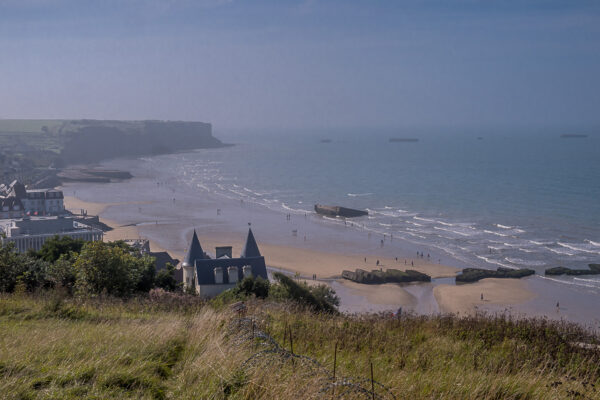
- The Higgins landing craft boats were initially designed for use in Louisiana swamps. Lumber businessman and former Nebraska National Guard Infantry Officer Andrew Higgins had a hard time extracting hardwood trees from the back swamps of Louisiana. General Eisenhower once called Higgins “the man who won the war for us.”
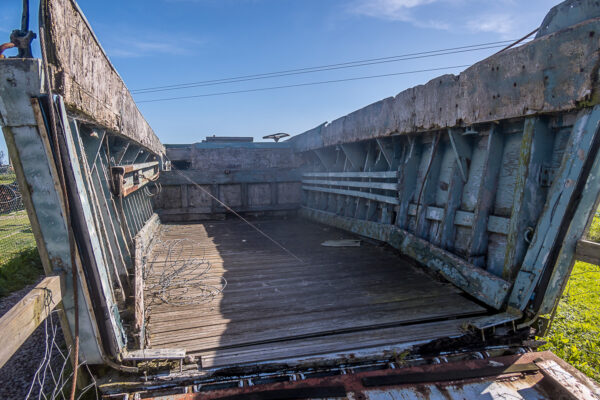
- The son of a U.S. President stormed the beaches of Normandy. A little over a month after D-Day, Theodore Roosevelt Jr. died of a heart attack. He was buried at the American Cemetery in Normandy. Roosevelt was posthumously awarded the Medal of Honor for his actions during the beach landing on Sept. 28, 1944.
- Eisenhower and Churchill both feared defeat. The invasion of Normandy brought back all too familiar feelings of sending men to their deaths. Churchill, the charismatic and confident leader, confided to his wife on the night of June 5, “Do you realize that by the time you wake up in the morning, 20,000 men may have been killed?”
- At Omaha Beach, 9,387 Americans are buried.
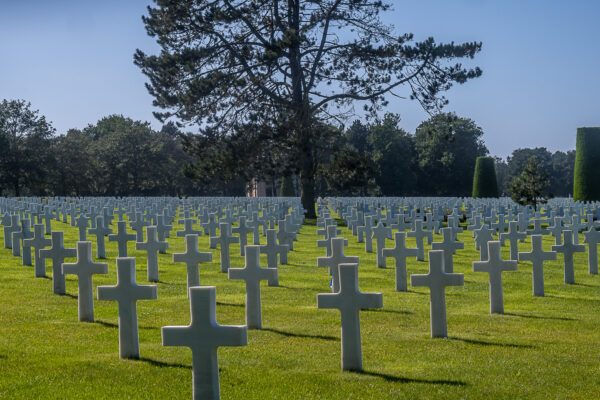
- On June 6, 1944, on D-Day, Operation Overlord started. The “D” in D-Day stands simply for “day.” The term was used to describe the first day of any large military operation.
- D-Day was an international effort. It required unprecedented cooperation between international armed forces. By 1944, over 2 million troops from 12 countries were in Britain in preparation for the invasion.
- Over 18,000 Allied paratroopers were dropped into the invasion. Nearly 7,000 naval vessels took part in Operation “Neptune”. Naval forces were responsible for escorting and landing over 160,000 ground troops on the beaches.
- 160,000 troops landed on 50 miles (80 kilometers) of beaches on D-day (Of those 160,000, 73,000 were from the United States, 83,000 from Britain and Canada. Forces from several other countries were also involved. More than 2 million Allied soldiers, sailors, pilots, medics, and others were involved in Operation Overlord.
- The sea landing started at 6:30 a.m. local time, just after dawn, targeting five code-named beaches, one after the other: Omaha, Utah, Gold, Sword, and Juno. Around 11,000 Allied aircraft, 7,000 ships and boats, and thousands of other vehicles were involved in the invasion.
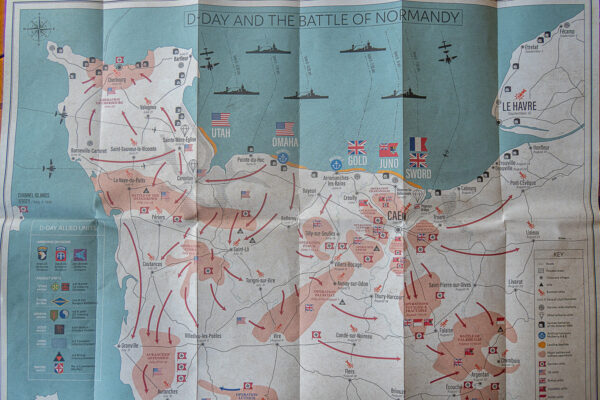
Those are just a few facts. It prepares you for what you will see when you visit Normandy and some of the 44 incredible museums, 21 natural sites, and 27 military cemeteries.
Every American citizen should visit Normandy, and it should be mandatory for each politician in the States. Why? You can see how Eisenhower, Churchill, and Stalin worked together. D-Day preparation started a year before the invasion, and several plans and ideas were changed, and great leaders needed to listen to each other. It was great teamwork, and I think we could use it again, particularly between our parties. Personal interests were put aside.
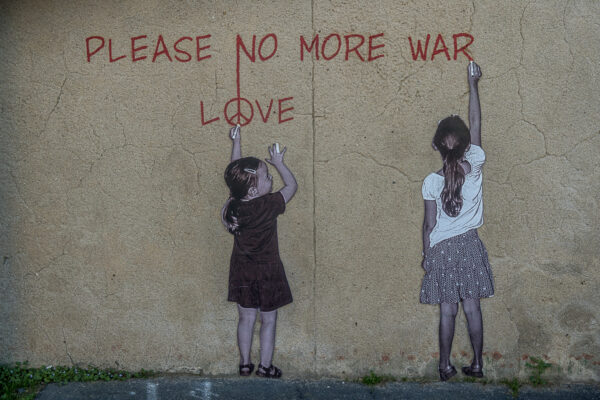
After this long introduction, I would like to add some personal notes Cindy and I experienced. For three days, we visited truly wonderful museums and visited natural sites. It was a triumphant moment in the history of good vs. evil where everyone came together. Normandy is a living museum. Still today, you can see many American flags on private homes. They are still thankful to the Americans. The French did and are still doing a great job showing the visitors the enormous tragedy of the war.
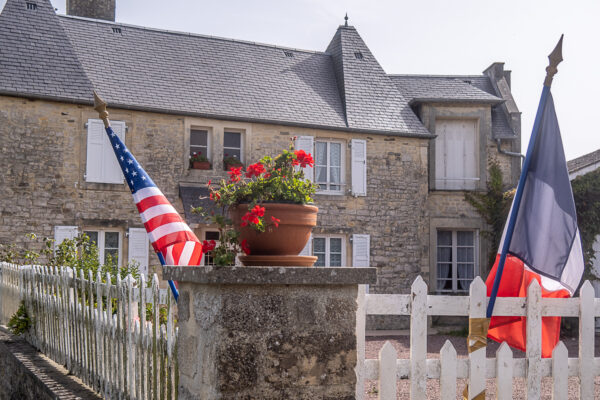
Museums are still being expanded, as well there are new sites being discovered. In January 2004, a British military historian, Gary Sterne, rediscovered Maisy Battery (a huge German gun battery and headquarters outside the town of Grandcamp-Maisy) based on a hand-drawn map in the pocket of a U.S. Army veteran’s uniform he had bought. Today, you can walk and revisit original 1.6 miles (2.5 km) of German trenches, bunkers, and emplacements.
Visiting the American Military cemetery puts you in a sober mood. Behind all those white crosses, neatly lined up, is a sad story of a son, brother, or father. Their lives ended way too early. In some of the museums, you can read letters of fallen soldiers. They are all heartbreaking. The letters were full of hope and love …. until a bullet ended their dreams.
A powerful song by Bob Dylan is John Brown. In one line, he sings: “But the thing that scared me most, when my enemy came close, I can see that his face looked just like mine.”
To make things easier, we stayed in a beautiful hotel in the small town of Crépon. The food and wine were excellent. Even leaving a restaurant, you see signs from the war fought here and there only 79 years ago.
On one of the monuments was written in stone:
“They gave their TOMORROW for our TODAY.”
[caption id="attachment_9080" align="alignnone" width="600"] Arromanches-les-Bains (Gold Beach)[/caption]
Arromanches-les-Bains (Gold Beach)[/caption]
[caption id="attachment_9083" align="alignnone" width="600"]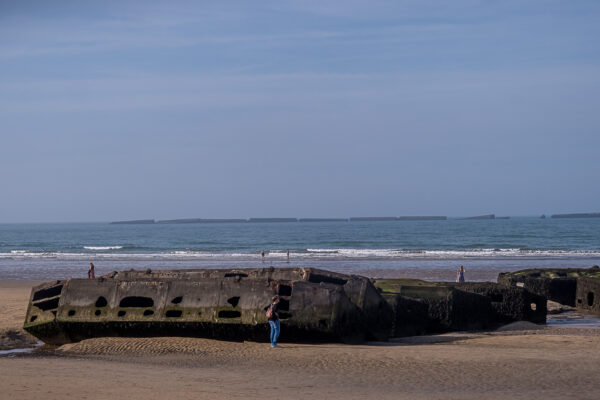 A part of the “artificial” Mulberry Harbor.[/caption]
A part of the “artificial” Mulberry Harbor.[/caption]
[caption id="attachment_9084" align="alignnone" width="600"]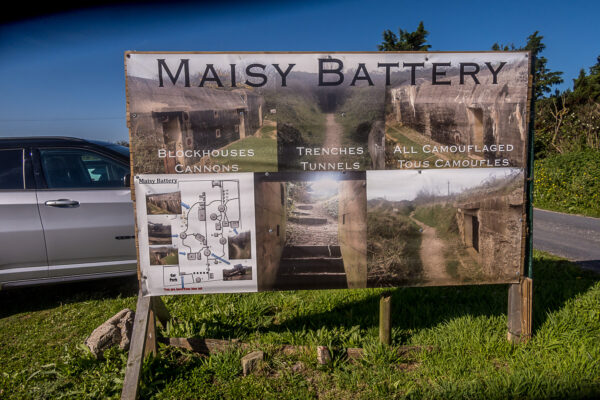 German bunkers[/caption]
German bunkers[/caption]
[caption id="attachment_9085" align="alignnone" width="600"]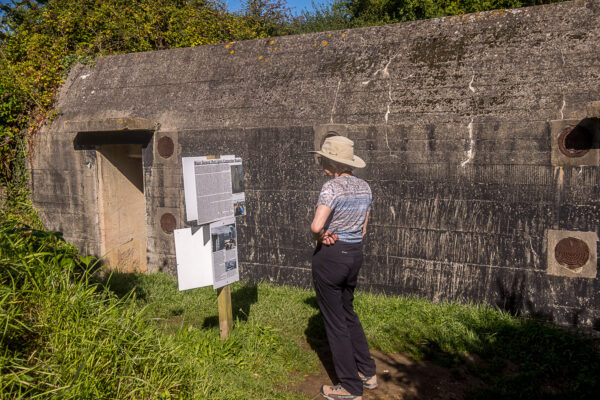 Part of the German “Kommando Zentrale” (Command Center)[/caption]
Part of the German “Kommando Zentrale” (Command Center)[/caption]
[caption id="attachment_9088" align="alignnone" width="600"]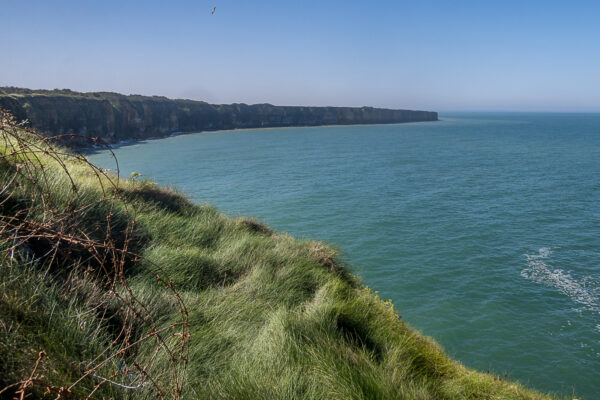 Pointe-du-Hoc / Omaha Beach. Americans landed here and climbed the steep cliffs.[/caption]
Pointe-du-Hoc / Omaha Beach. Americans landed here and climbed the steep cliffs.[/caption]
[caption id="attachment_9086" align="alignnone" width="600"] The Allies used the so-called Higgins Boats.[/caption]
The Allies used the so-called Higgins Boats.[/caption]
[caption id="attachment_9087" align="alignnone" width="600"]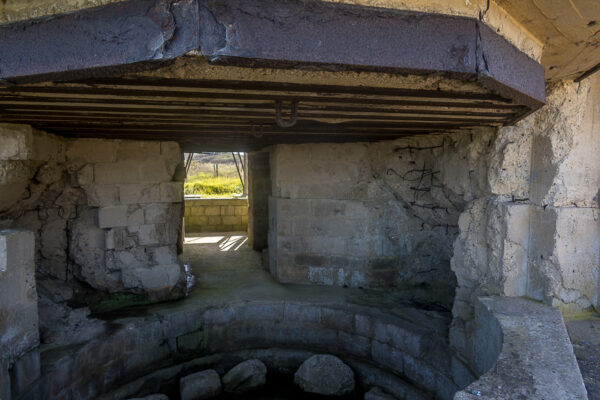 Part of the German’s Festung (fortress)[/caption]
Part of the German’s Festung (fortress)[/caption]
[caption id="attachment_9090" align="alignnone" width="600"]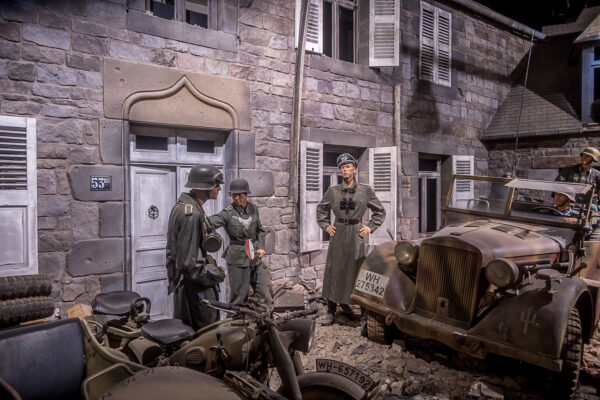 Inside the Museum Overlord.[/caption]
Inside the Museum Overlord.[/caption]
[caption id="attachment_9095" align="alignnone" width="600"]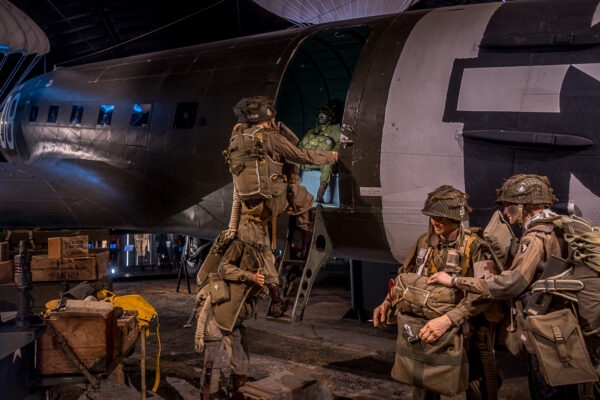 Parachuts boarding an original plane at the Museum Airborne in Sainte Mère Église.[/caption]
Parachuts boarding an original plane at the Museum Airborne in Sainte Mère Église.[/caption]
[caption id="attachment_9092" align="alignnone" width="600"] American Cemetery above Omaha Beach. It has 9,387 headstones from soldiers who fell in combat.[/caption]
American Cemetery above Omaha Beach. It has 9,387 headstones from soldiers who fell in combat.[/caption]
[caption id="attachment_9096" align="alignnone" width="600"]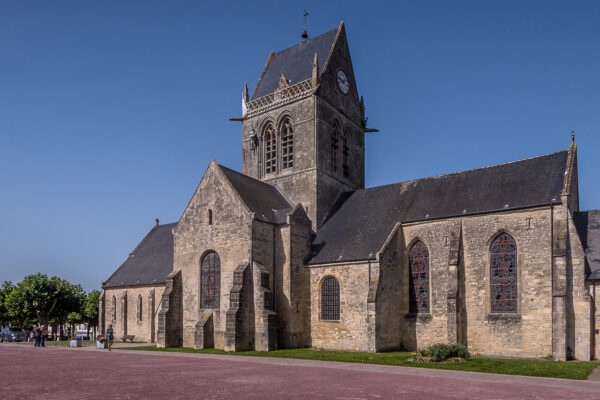 Saint-Mère-Eglise[/caption]
Saint-Mère-Eglise[/caption]
[caption id="attachment_9097" align="alignnone" width="600"]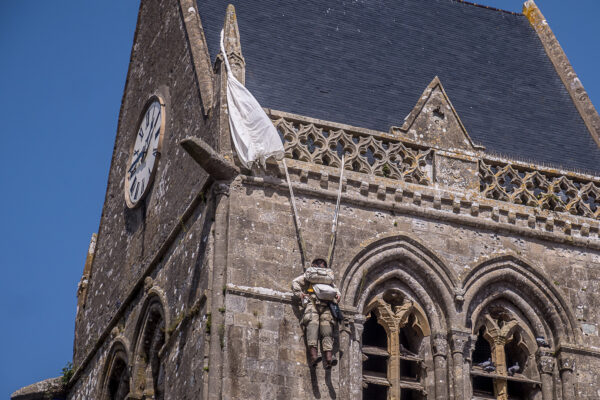 John Steele still hanging there.[/caption]
John Steele still hanging there.[/caption]
[caption id="attachment_9103" align="alignnone" width="600"]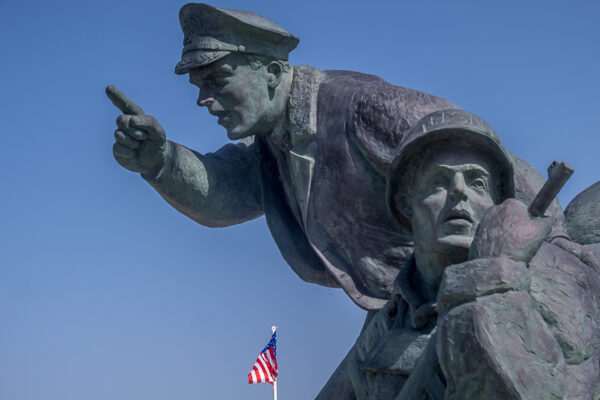 Part of a monument in honor of the US Navy. (It was inaugurated in 2008)[/caption]
Part of a monument in honor of the US Navy. (It was inaugurated in 2008)[/caption]
[caption id="attachment_9104" align="alignnone" width="600"]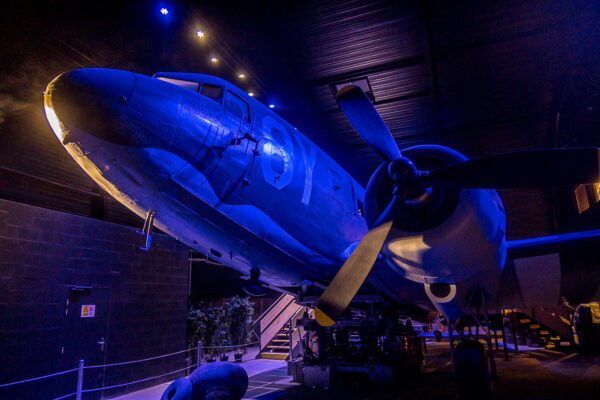 Experience D-Day. Relive the flight from England to Normandy just like in 1944. We did it with this flight simulator. Pretty amazing experience.[/caption]
Experience D-Day. Relive the flight from England to Normandy just like in 1944. We did it with this flight simulator. Pretty amazing experience.[/caption]
[caption id="attachment_9109" align="alignnone" width="600"]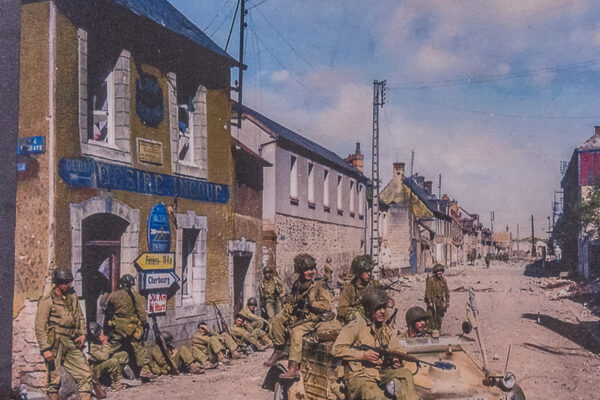 In the museum they reconstructed houses and scenes based on old photos they found. Compare this picture with the next photo.[/caption]
In the museum they reconstructed houses and scenes based on old photos they found. Compare this picture with the next photo.[/caption]
[caption id="attachment_9112" align="alignnone" width="600"]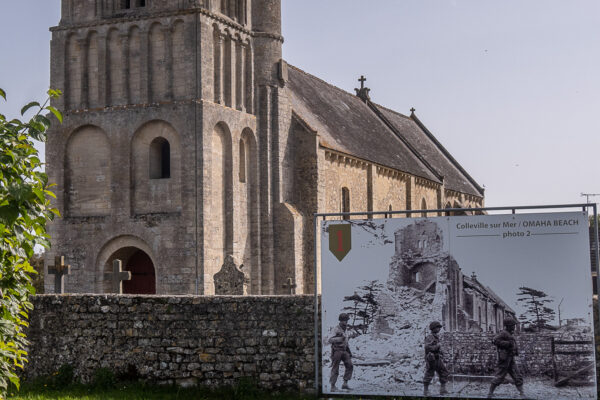 Original picture of a bombarded church in Colleville Sur Mer / Omaha Beach. Now the church was rebuilt the way it was before the war.[/caption]
Original picture of a bombarded church in Colleville Sur Mer / Omaha Beach. Now the church was rebuilt the way it was before the war.[/caption]

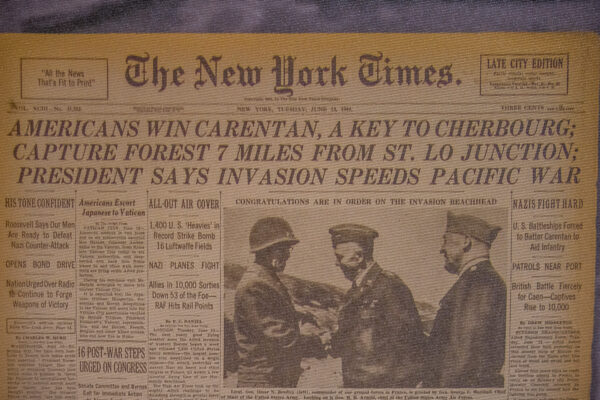
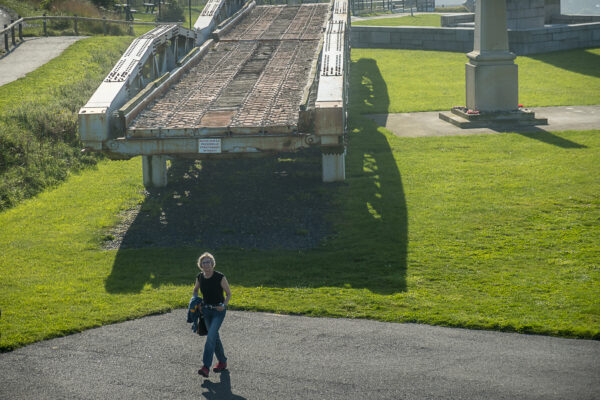
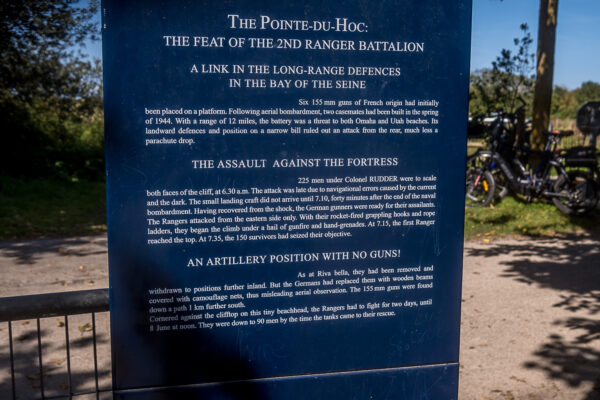
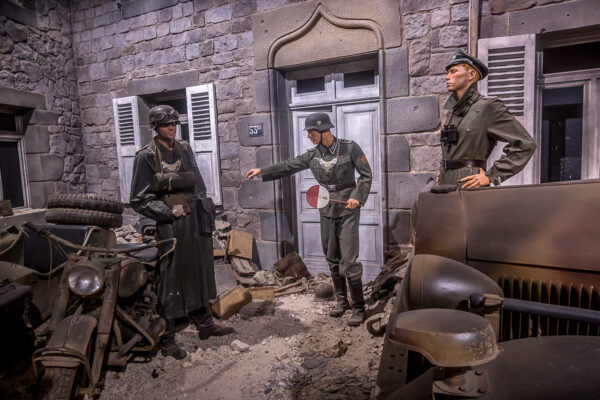
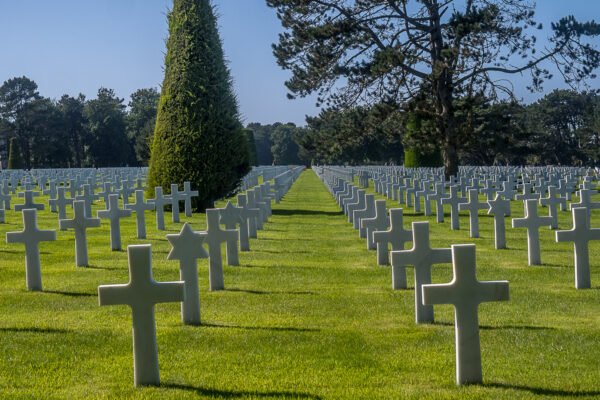
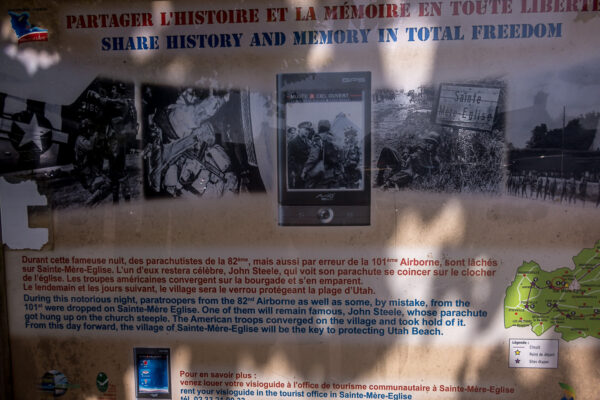
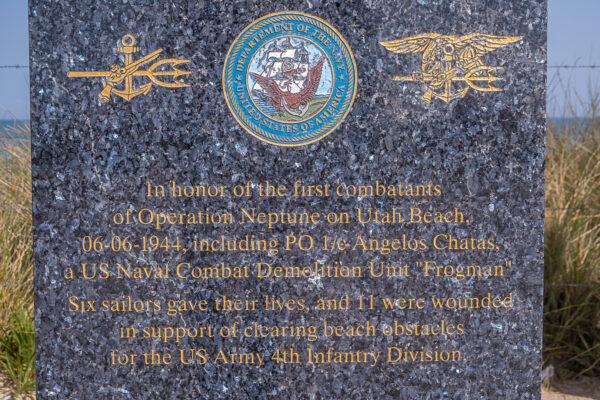
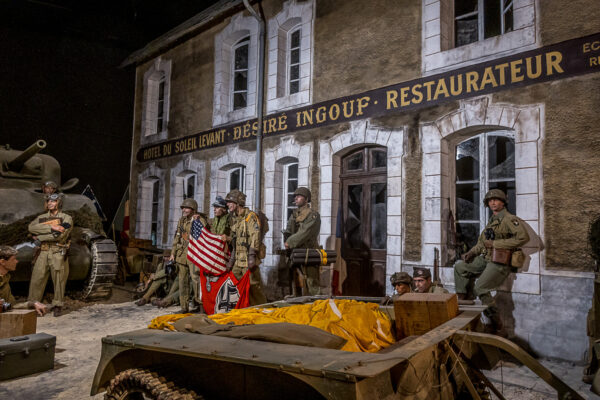
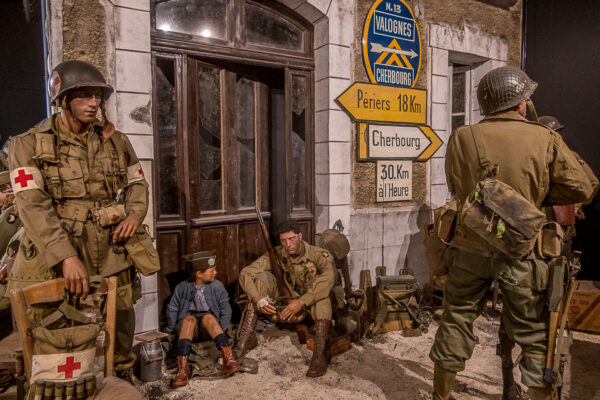
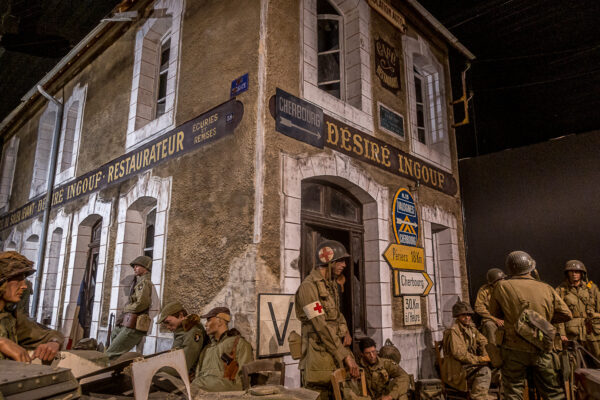

4 Comments